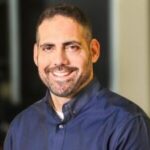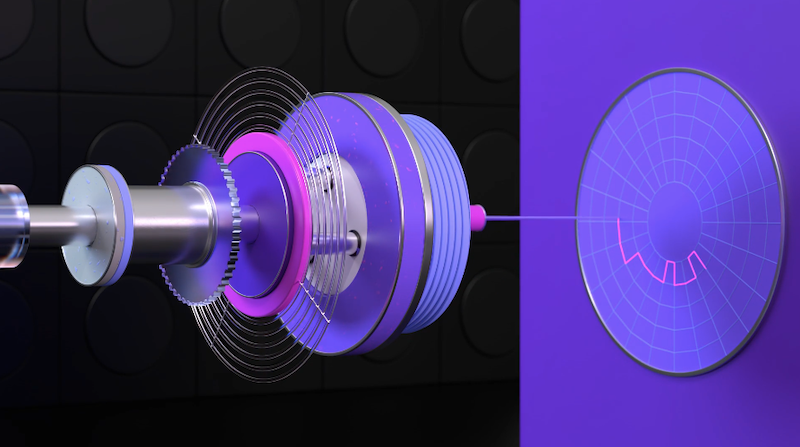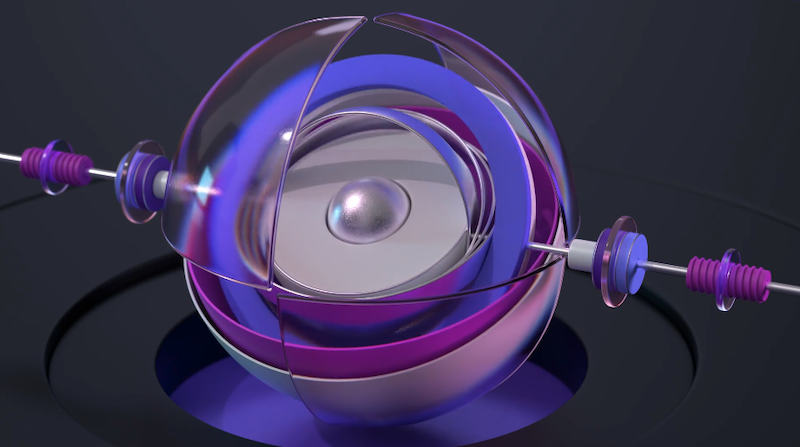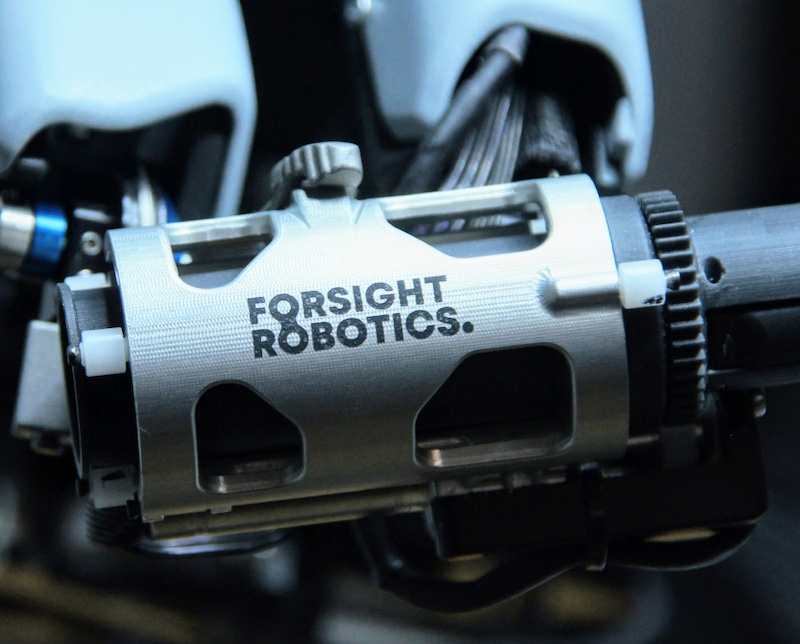When most people think of robotic surgery, they picture large machines assisting with major operations, but ForSight Robotics is applying that same precision to one of the smallest and most delicate parts of the human body: the eye.
Founded in 2020 by Dr Joseph Nathan, Professor Moshe Shoham, and Dr Daniel Glozman, ForSight Robotics is developing Oryom, the world’s first robotic system designed specifically for eye surgery.
The platform aims to perform complex procedures such as cataract removal with micron-level precision, using robotic instruments controlled through AI and advanced computer vision.
The goal is not to replace surgeons, but to enhance their capabilities – allowing them to operate with greater accuracy, endurance, and consistency while expanding global access to sight-saving care.
Dr Joseph Nathan, ForSight’s co-founder, president, and chief medical officer, brings a blend of medical and engineering expertise to this mission.
Before qualifying as a physician, he earned both a bachelor’s and master’s degree in engineering at the Technion – Israel Institute of Technology, giving him a unique perspective on how robotics can transform ophthalmic surgery.
His career has been shaped by a recognition that eye operations require extreme precision – and that human skill alone may not be enough to meet rising global demand as the population ages and the number of trained ophthalmic surgeons declines.
In this Q&A, Dr Nathan explains how ForSight Robotics is tackling these challenges head-on. He discusses the development of the Oryom platform, the company’s progress toward first-in-human clinical trials, and its vision for a future where robotic systems help eliminate preventable blindness worldwide.
Interview with founder of ForSight Robotics
Robotics & Automation News: You co-founded ForSight Robotics in 2020 alongside Professor Moshe Shoham and Dr Daniel Glozman. Could you reflect on the moment or insights that inspired you to pivot from traditional ophthalmic surgery to founding a robotics company focused on eye care?

Dr Joseph Nathan: Before pursuing my MD, I earned a BS and MSc in engineering at the Technion – Israel Institute of Technology.
During surgical residency, I recognized the precision required in eye surgery and how robotics is ideally suited for ophthalmic procedures.
At the same time, I witnessed a widening care gap: rising patient volumes and fewer ophthalmic surgeons, driven by steep learning curves and the physical toll of technical procedures.
Alongside Professor Moshe Shoham (Mazor Robotics founder), we dove into commercialized medical robotics and identified a gap in the market for ophthalmologic robotic technology.
Together with Daniel Glozman, inventor of XAct Robotics, we launched ForSight Robotics to address preventable blindness, improve patient outcomes and reduce surgical burnout.
R&AN: The Oryom Platform is described as the world’s first robotic system for cataract and other ophthalmic surgeries. What were the biggest technological and clinical hurdles you faced in translating a highly delicate manual procedure into a robotic workflow?
JN: ForSight’s Oryom Platform is a first-of-its-kind technology. It is designed to deliver micron-level precision with 14 degrees of freedom, giving surgeons “superhuman” dexterity to access every point of the human eye.
Building at the frontier of innovation requires a highly technical and experienced team across multiple disciplines to develop complex robotics systems.
It requires cross-disciplinary coordination between hardware, AI-driven software, and real-world clinical needs.
Similar to any deep tech company, we’ve experienced different hurdles, such as aligning advanced engineering with clinical realities and managing long-term product roadmaps, all while growing and scaling a startup.
R&AN: With $125 million in Series B funding recently secured and ISO 13485:2016 certification achieved, what are the immediate next steps – from clinical trials to regulatory approvals – for the Oryom Platform to reach operating rooms worldwide?
JN: At ForSight, we’re transforming how eye surgery will be performed, increasing surgical accuracy and improving overall patient outcomes.
Our Series B funding round, led by Eclipse, was a critical milestone as we look to accelerate ForSight’s next phase of growth for our Oryom Platform.
With over 300 successful completions of cataract procedures on porcine eyes, ForSight is working towards its first in-human clinical trials later this year.
We’re also focusing on the future, ensuring that every decision, platform update, and company growth trajectory supports our go-to-market vision of building the next frontier of surgical robotics.
R&AN: Ophthalmologist shortages are a global issue, and surgical demand is rising. How do you envision Oryom Platform impacting workforce dynamics and patient access in underserved regions or countries facing severe surgeon scarcity?
JN: With an aging population and longer life expectancy, cataract prevalence is expected to double by 2050.
At the same time, we are seeing considerable strain on the growing need for cataract surgeries (+24 percent) and an anticipated decline in surgeons to perform the procedure (-12 percent) by 2035.
ForSight’s Oryom Platform addresses this gap by reducing intraoperative time, minimizing surgeon fatigue and expanding surgical throughput.
The platform enables more procedures per day, and over time, which is especially critical in underserved regions with severe workforce shortages and limited access to care. Its improved patient outcomes also ensure broader, higher-quality ophthalmic care worldwide.
R&AN: Surgeons often hesitate when integrating new technology. What has been the response so far from practicing ophthalmic surgeons – early adopters or skeptics – and how are you addressing concerns around safety, training, and trust?
JN: Unlike when Intuitive Surgical first introduced surgical robotics in the 1980s, today’s surgeons in the OR (operating room) often seek out new technology.
As technology becomes more readily available, we will see more surgeons embrace new technologies at a faster pace over the next five years.
ForSight is prioritizing surgeon training as a cornerstone of its technology adoption strategy by investing significant resources to create comprehensive, hands-on training to give surgeons hands-on experience with the technology.
In addition to technical skills-building, our training programs carefully align with the latest safety regulations.
By maintaining rigorous training standards and ongoing education opportunities, ForSight empowers surgeons with the tools to deliver safe, accurate and highly precise outcomes.
R&AN: Oryom is built with AI, advanced computer vision, and micromechanics, aiming for multi-segment eye access, including future glaucoma and retinal procedures. What is your long-term roadmap for extending the platform beyond cataracts?
JN: Right now, we are focused on addressing cataracts, the most common eye disease. However, because our technology reaches every part of the human eye, in the future, we plan to expand our services to treat additional eye conditions, including glaucoma and retinal diseases.
By treating cataracts first, we are working to ease the demand on surgeons, aiming to expand their overall capacity to treat additional ocular diseases.
As surgical robotic technology continues to advance, we hope to introduce automated surgical steps to further ease surgeons’ physical stress and increase access to highly precise treatments worldwide.
R&AN: Drawing on your combined experience in medicine, engineering, and commercialization, what keeps you motivated through the challenges of pioneering deep-tech in healthcare, and what impact would you most like to see ForSight Robotics achieve in the next five years?
JN: At ForSight, our founding mission is to create groundbreaking technology that democratizes access to high-quality, sight-saving surgical eye care that eradicates preventable blindness worldwide.
This mission continues to drive our team forward in advancing the Oryom Platform, pioneering a new frontier of delivering eye care and elevating patient outcomes for all.
Over the next five years, we’re prioritizing scaling our technology to mass-commercialize the Oryom Platform.
We are targeting the US first, then regions such as India, China and the Middle East, which are making significant investments in healthcare infrastructure to keep up with growing patient demand.



